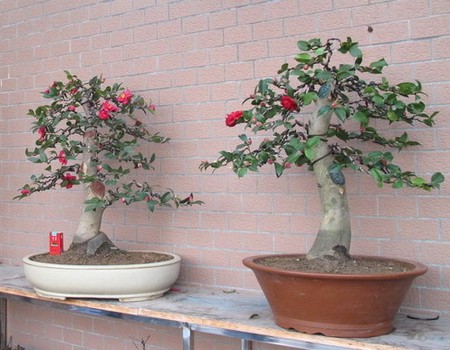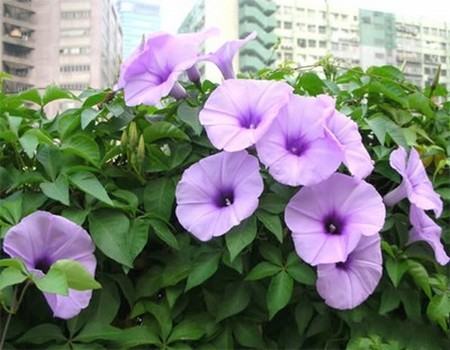The method of ramet propagation of Cymbidium
Smiling gentleman orchid, when the flower blossoms, it seems to bow its head and smile, so its name. The asexual reproduction of flowers has the methods of cutting, ramet, striping, grafting and so on, but the asexual reproduction of Cymbidium is generally only the method of dividing plants, and this method is more common.
To propagate by dividing plants, you must first do some preparatory work:
1. Family potted plants should prepare flowerpots, the flowerpots had better be earthen pots, do not buy porcelain and pottery ones with beautiful surface, because they have poor air permeability and are not conducive to plant growth.
2. When preparing the medium soil, it is best to carry out disinfection treatment. If humus soil is mixed with fine sand, humus soil should be sprayed with potassium permanganate 1000-2000 times aqueous solution to disinfect; fine river sand should also be washed and disinfected with boiling water to prevent seedlings from being infected and rotted by germs.
3. Prepare a little charcoal powder to smear the wound for moisture absorption to prevent decay.
4. sharpen the knife used for cutting, and finally quickly dry grind (without adding water) dozens of times on the grindstone to make the knife body highly hot to kill germs.
Specific operation methods:
1. When dividing a plant, first bring the mother plant of Cymbidium from the basin, remove the resident soil, and find out the buds that can be divided. If the daughter plant is born on the outer edge of the mother plant and the plant is small, you can hold the bulb in one hand and the base of the child plant in the other hand and tear it off; if the daughter plant is strong and not easy to break off, it should be cut off with a prepared sharp knife. Never break it by force, so as not to damage the young plants.
2. After the seed plant is cut off, the wound should be smeared with dried charcoal powder immediately to absorb the dry fluid and prevent decay.
3. Then, the seed plant is planted in the pot. When planting, the planting depth is to bury the false bulb at the base of the seed plant, make it slightly higher on the part of the seedling plant, and cover it with sterilized sand.
4. immediately after planting, pour water once, and then cover with a layer of culture soil when the wound heals 2 weeks later. It usually takes 1-2 months to produce new roots and 1-2 years to blossom.
The heredity of Cymbidium, which is propagated by the split method, is relatively stable and can maintain various characteristics of the original species. After flowering in spring every year, the offspring next to the mother plant of Cymbidium are separated and cultivated independently, which are usually planted in sandy soil until they take root after about two months and can be cultivated in the basin.
Note:
1. The cultivation of Cymbidium should not be watered too much, just be moist. May-June is the rainy season of plum, so we should prevent Rain Water from scouring the laughing magnolia so as not to rot the roots.
2. In summer, we should pay attention to spraying water to cool down the orchid properly, while in autumn, we should fertilize the soil to promote the growth of leaves, and keep the soil moist in winter, which is conducive to flowering.
Time: 2019-06-11 Click:
- Prev

Fertilization method of tea plum bonsai
There are many varieties of tea plum, mostly white flowers, a few safflower, mainly produced in Jiangsu, Zhejiang, Fujian, Guangdong and other provinces along the Yangtze River and southern provinces, is a subtropical suitable tree species. For the newly boiled tea plum, there are many points to pay attention to. Special attention should be paid to fertilization, which should be done properly. Friends who still have questions about this.
- Next

The breeding method of Golden Dragon with five claws
The five-clawed golden dragon (scientific name: Ipomoeacairica) is a perennial herb of the order Cyanoptera, Spirulaceae and sweet potato, commonly known as Pandora paniculata and Petunia paniculata. It usually grows in the mountains. The leaves are palmately shaped, with 5-7 cracks, about 3-10 cm in size, and the flowers are funnel-shaped.
Related
- Fuxing push coffee new agricultural production and marketing class: lack of small-scale processing plants
- Jujube rice field leisure farm deep ploughing Yilan for five years to create a space for organic food and play
- Nongyu Farm-A trial of organic papaya for brave women with advanced technology
- Four points for attention in the prevention and control of diseases and insect pests of edible fungi
- How to add nutrient solution to Edible Fungi
- Is there any good way to control edible fungus mites?
- Open Inoculation Technology of Edible Fungi
- Is there any clever way to use fertilizer for edible fungus in winter?
- What agents are used to kill the pathogens of edible fungi in the mushroom shed?
- Rapid drying of Edible Fungi

